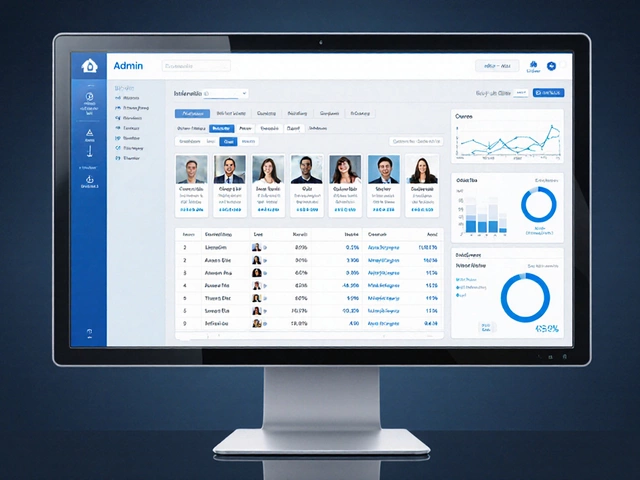Static slides and endless text blocks send people straight for the exit—literally just a click and they’re gone. If you want your eLearning to stick, you need interactivity from the jump. But building this isn’t about plugging in a few quiz questions and calling it a day. You’ve got to set things up so people actually want to pay attention—and walk away having learned something they’ll remember.
Start by thinking about the end user. What do they really need help with? What challenges or questions will keep them curious and motivated? When you nail this, the rest falls into place a lot easier. Also, be honest about your own tech skills. Building interactive eLearning can be smooth or a total headache depending on the platform you choose. There are no points for picking something too complex “just because.”
- Choosing the Right eLearning Platform
- Designing Content for Engagement
- Tools & Features for Interactivity
- Measuring Success and Tweaking What Doesn’t Work
Choosing the Right eLearning Platform
Picking the best eLearning platform can totally make or break your project. There are tons of options out there, but not all of them play nice with interactive elements. Some are built for flat content, while others actually nail things like branching scenarios, drag-and-drop, screen recording, and live feedback.
Here’s what you need to look out for if you’re serious about making interactive eLearning that sticks:
- Easy authoring tools: Does it let you add interactive quizzes, clickable hotspots, or video easily? Look for platforms with drag-and-drop editors and built-in templates so you’re not coding from scratch.
- Support for multimedia: Some platforms handle just text and images, while others let you mix in video, audio, and even animations. More media, more engagement.
- Mobile-friendly: Over 60% of eLearning happens on mobile or tablets. Make sure what you build looks good and works smoothly on any device—because not everyone is glued to a laptop.
- Integrations: Does it connect with your LMS, HR software, or grading systems? Plug-and-play setups save headaches later.
- Analytics: If you can’t track what people click, where they drop off, or which activities help them learn the most, you’re flying blind. Strong reporting features are a must.
Here’s a quick look at how leading platforms stack up for interactive features:
| Platform | Drag-&-Drop | Branching Scenarios | Mobile Friendly | Analytics |
|---|---|---|---|---|
| Articulate 360 | Yes | Yes | Yes | Robust |
| Moodle | Limited | With Plugins | Yes | Basic |
| Adobe Captivate | Yes | Yes | Yes | Advanced |
| Google Classroom | No | No | Yes | Very Basic |
Avoid the trap of shiny features you don’t need. Get clear about your budget, team’s skill level, and the type of training you’re delivering. Sometimes, simple cloud tools like Google Classroom are enough. But if you want serious interaction—like scenario-based learning or simulations—you’ll want something purpose-built, like Articulate 360 or Captivate.
Designing Content for Engagement
Boring content gets skipped. That’s true whether you’re making a training for your team or teaching people around the world. You want your course to pull people in, not put them to sleep. The secret? Mix up formats, keep things practical, and make sure every click has a point.
Here’s something cool: a recent LinkedIn Learning report showed that courses with short videos, bite-sized tasks, and real-world scenarios get double the completion rates compared to courses filled with endless reading. It makes sense—nobody remembers dry theory, but everyone remembers a tricky scenario they solved on their own.
So, how do you get there? Start with stories and real-life problems instead of walls of text. If you can, swap out lecture-style stuff for scenarios, decision points, or quick simulations. Even adding simple drag-and-drop activities or “what would you do?” choices makes things more fun and way more memorable.
- Break info into small, snackable pieces. Don’t overload anyone with huge paragraphs or hour-long videos.
- Use images, short clips, and even memes (if your audience is cool with it) to highlight big points.
- Include knowledge checks. Tiny, low-pressure quizzes right after someone learns something help lock it in. Nothing stressful—just a quick check-in to make stuff stick.
- Give real feedback. If someone chooses a wrong answer or does a simulation, add a quick explanation or hint to help them get it right down the road.
If you want your interactive eLearning to stand out, keep user actions front and center. The best content always has a reason to click, drag, or decide. If your lesson is just "next, next, next," it’s time to shake it up. Think less about what you want to say and more about what your learners will actually do with that knowledge once they’re done. That’s the stuff that sticks.

Tools & Features for Interactivity
Here’s where things get interesting. Today, eLearning platforms aren’t just digital textbooks—they’re packed with features meant to keep users active and involved. The days of boring slideshows are gone if you take advantage of what these tools offer.
If you want your interactive eLearning content to work, quizzes are the obvious starting point. But go a step further. Mix in drag-and-drop activities, hotspots, “click-to-reveal” elements, and branching scenarios where choices actually change what happens next. These features are proven to boost engagement and memory, according to a 2023 study published by the eLearning Guild.
Good platforms (think Articulate 360, Adobe Captivate, and iSpring Suite) come loaded with templates that make it simple to build these activities without knowing a single line of code. Don’t want to spend much? Google Forms and H5P plug-ins can be added to most learning management systems for free or cheap and still let you add some interactivity without fuss.
- Video with Interactivity: Tools like Panopto and Edpuzzle let you put questions and polls right in videos. Learners can’t just hit play and zone out—they have to interact.
- Gamification Features: Badges, points, leaderboards—these aren’t just gimmicks. Platforms like TalentLMS and Moodle let you easily add game elements, which have been shown to increase course completion rates by up to 60% over plain content.
- Discussion Boards and Social Sharing: Most modern platforms have built-in forums and chat. These let learners ask questions, share tips, and help each other out right inside the course itself.
Always test your activities. If they’re confusing, glitchy, or take forever to load, people will bail. Try them yourself on your phone, tablet, and laptop to make sure they run smooth everywhere.
The mix of features you use should line up with what you want people to actually do. Don’t use a puzzle if you just need a simple recap, but don’t skip interactivity either. The right combo keeps folks coming back for more—and actually learning.
Measuring Success and Tweaking What Doesn’t Work
Building something great is only half the game. You’ve got to know if your interactive eLearning actually does its job before you pat yourself on the back. That means tracking who’s showing up, where people drop off, and if anyone remembers what they learned a week later. Data is your friend here—most decent platforms let you pull detailed reports on interactive eLearning activity.
Look for numbers like completion rates, quiz scores, and time spent on tasks. Low scores or people bailing out halfway? That’s a red flag. And it’s not just about the numbers — ask for real feedback too. Online surveys and anonymous polls are easy to set up inside most modern platforms. Try questions like “Which section felt boring?” or “Where did you get stuck?”
Here are a few quick ways to tighten things up:
- Change up activities if people breeze through quizzes too easily. Try case studies or real-world scenarios instead of basic multiple choice.
- If users hit the same snag, simplify the wording or break down content into smaller chunks.
- Cut anything nobody uses. If nobody clicks the ‘interactive map’ feature, swap it out for something they actually use.
- Check out heatmaps or screen recordings if your tool offers them—these show where people click, pause, or bail out.
Set a regular schedule to review all this info. Every quarter is a good start if you want steady improvements. By treating your course as something you tune up, not a one-and-done project, you’ll keep people engaged and actually learning.





Write a comment